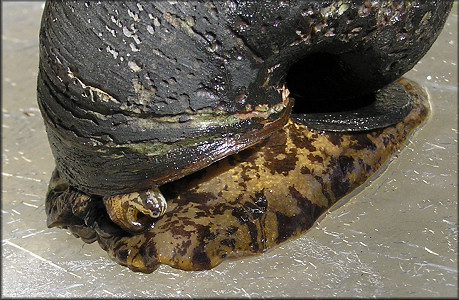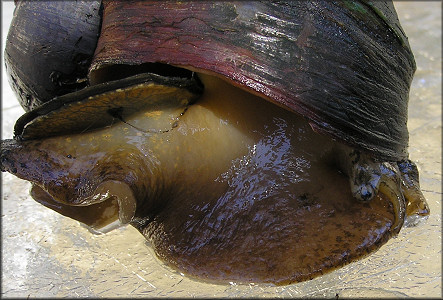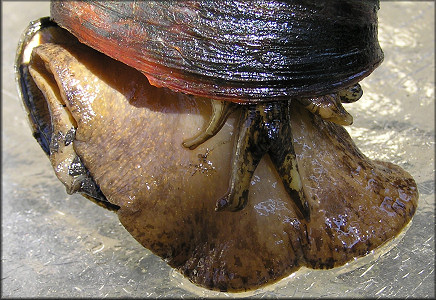|
Pomacea maculata Perry, 1810 In Far West Volusia County, Florida Page Two |
|
| A follow-up visit was made to drainage ditch by Joel Wooster and the writer (Bill Frank) about a week later on October 15th, and the ditch was examined much more closely. Evidence of Pomacea was seen throughout its entire length, but the deployment of the animals appeared to be uneven with many egg clutches and/or snails in some areas while others contained neither. There was no visible explanation for this disparity. Despite a quite thorough search, only about 18 living adult Pomacea were found, although empty shells and living juveniles were quite common. The largest specimen found, a crusty veteran, measured 80 mm. Based upon this single investigation, the Pomacea population of the ditch appears to be quite low. This could be explained by frequent harvesting of snails by local fisherman, predation by wading birds (for which there is anecdotal support), or a lack of sufficient food. | |
| Of interest, a local Volusia County resident transplanted some of the Pomacea maculata specimens from the ditch to a small pond in DeLand (also in Volusia County) not realizing that the species was not native to Florida. Reportedly, the snails thrived for about two years in their new home. However, a visit to the DeLand pond on 11/5/2005 failed to yield even a single living adult specimen despite an intensive collecting effort. Dead adult shells and living juvenile specimens were not uncommon. These observations suggest that the snail population may have exceeded the ability of the pond to provide sufficient food. Whether a viable breeding population is still present in the pond remains to be seen. | |
|
The mottled coloration of the Volusia County Pomacea maculata specimens is illustrated below. |
|
|
|
|
|
|
|
|
|
|


